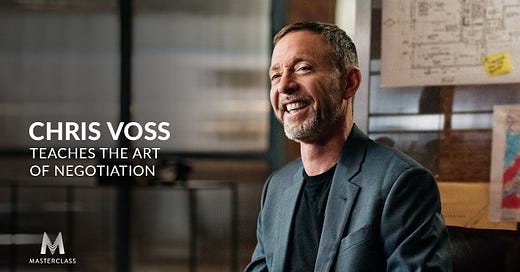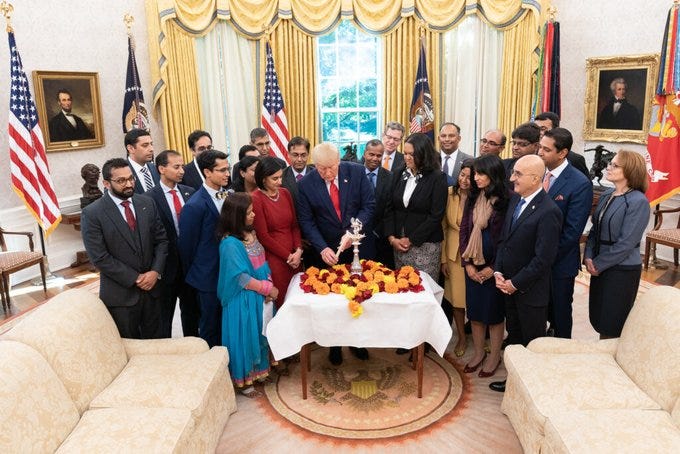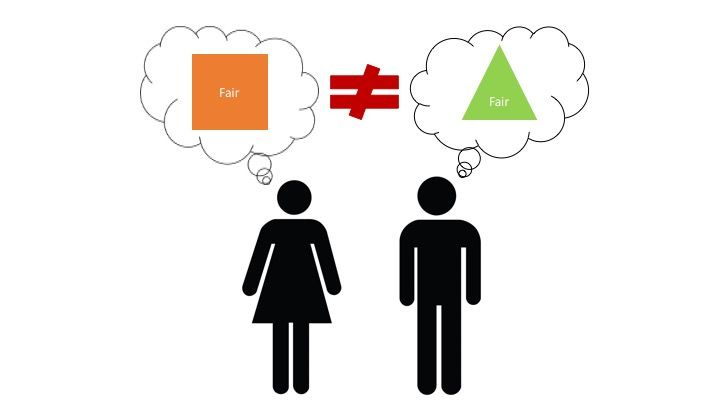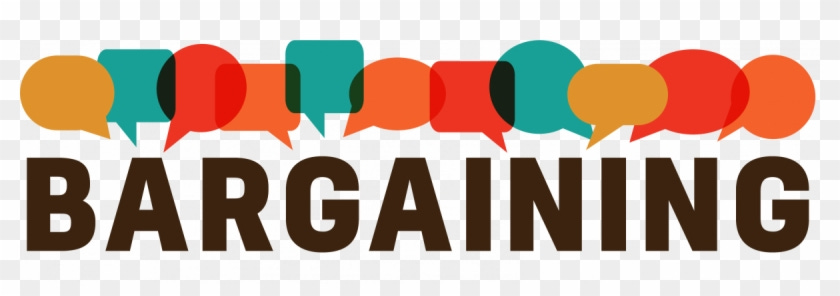The Art of Negotiation by Chris Voss (Part 2)
He who has learned to disagree without being disagreeable has discovered the most valuable secret of negotiation. The era of negotiation continues here.
Hey there! Happy Diwali 🪔 to all of you who are celebrating. Greetings from my home city: Surat.
Diwali is about the victory of good (light) over evil (darkness).
It is celebrated to mark the return of the Hindu Lord Ram to his kingdom after Ramayana. It’s one of the coolest and epic stories ever!
Many Asian communities celebrate with lights, fireworks, sweets and greetings.
Here are some photos of people celebrating the global festival that is #Diwali2020.
This is a continuation of the incredible negotiation series based on the Masterclass by Chris Voss. Before moving forward, please read Part 1 by clicking below!
Following the incredible negotiation techniques that we discussed, let’s level up right here, right now.
After #1 Mirroring, #2 Labelling and #3 Value of Saying No…
#4 Bending Reality 🙃
“Give us the money,” the kidnappers said to me, “or your little brother is going to die.”
When a ransom call comes to you like that, all we can think of is one thing: paying them. We’re petrified just by the thought of those deranged criminals who say that they’ll kill your brother unless you pay them immediately. It seems impossible to find any leverage in that situation, correct?
Wrong. There’s always leverage. Negotiation is never a linear formula. We all have irrational blind spots, hidden needs, and undeveloped notions. Once we understand that the subterranean world of unspoken needs and thoughts, you’ll discover a universe of variables that can be leveraged to change your counterpart’s needs and expectations.
Anchor their emotions: The Accusations Audit
Address all the negative elephants in the room.
The goal is to have your opposition dismiss the worse possible scenarios by specifically calling them out. Your goal is to dispel these notions to get any emotional baggage out of the way of making a deal.
You then phrase each of these in a statement such as, “You probably think that…”
Here are a few examples:
“You probably think that we are trying to sell you a lemon.”
“You probably think that we don’t care if you make a profit.”
“You probably think we are hiding something.”
Here’s something I said to a hotel manager before asking for a late checkout:
“You will probably think that I am going to be the worst customer of your hotel…”
After hearing that, he asked me worriedly “What happened?”, to which I said, “I really need a late checkout.”
I got one.
By anchoring their emotions in preparation for a loss, you inflame the other side’s loss aversion so that they’ll jump at the chance to avoid it. (to avoid something worse than a late checkout, in my case) The hotel manager probably thought I broke something expensive in the room, thank god for him all I needed was a late checkout.
You can bend your counterpart’s reality by anchoring his starting point. Before you make an offer, emotionally anchor them by saying how bad it will be.
#5 The ℱ-word
The most powerful word in negotiations is “Fair.” As human beings, we’re mightily swayed by how much we feel we have been respected. People comply with agreements if they feel they’ve been treated fairly and lash out if they don’t. Use this word with extreme care.
Let me tell you a story about Iran.
In recent years, Iran has put up with sanctions that have cost it well over $100 billion in foreign investment and oil revenue in order to defend a nuclear program that can only meet 2 percent of its energy needs. IN SHORT, Iran has screwed itself out of its chief source of income—oil and gas revenue—in order to pursue an energy project with a very little or no expected payoff.
Why? Again, fairness.
For Iran, it’s not fair that the global powers—which together have several thousand nuclear weapons—should be able to decide if IRAN can use nuclear energy.
In a TV interview, former Iranian nuclear negotiator Seyed Hossein Mousavian hit the nail on the head. “The nuclear issue today for Iranians is not nuclear,” he said, “it’s defending their integrity [as an] independent identity against the pressure of the rest.”
You may not trust Iran, but its moves are pretty clear evidence that rejecting perceived unfairness, even at substantial cost, is a powerful motivation.
Once you understand what a messy, emotional, and destructive dynamic “fairness” can be, you can see why “Fair” is a tremendously powerful word that you need to use with care.
Voss’s friend was trying to sell her home a few years back. The offer she got was much lower than she wanted and out of frustration, she dropped this F-bomb on the prospective buyer.
“I just want what’s fair”
Emotionally rattled by the implicit accusation, the guy raised his offer immediately.
My take on dropping the F-bomb💣
Empathetic negotiation.
Before I tell my side, I paraphrase Chris’s words and say, “I want you to feel that you are being treated fairly all the time. So please stop me at any time if you feel I’m being unfair, and we’ll talk about it.”
With that statement, I let people know it is okay to use that word with me. As a negotiator, you should strive for a reputation of being fair. Your reputation precedes you. Let it precede you in a way that paves success.
IMPORTANT: If you get the sense that the people across the table think you’re being unfair, encourage them to speak their minds about it. Then ask for a few examples of how you allegedly been mistreating them. You may find that the other sides idea of fairness will result in something that is totally unfair for you. The key to negotiation is respect, but that doesn’t equate to subservience. Do whatever you can to deactivate this fear of loss. Remember your mirrors and labels and keep your negotiation grounded, collaborative, and positive.
#6 Calibrated Questions: HOW and WHAT, not WHY ⁉️
Speaking from a lot of personal experiences, the magic of this question is unrivalled.
“How am I supposed to do that?
If you’re being told to work after not being paid on time or being screwed out of money, simply summarise the situation from your POV and then ask, “How am I supposed to do that?”. You should not say “Why should I do that?”. The calibrated “How” question takes the aggression out of a confrontational statement or close-ended request that might otherwise make the other side angry.
If, like me, you’re facing a deadline that you’re unable to meet, instead of asking, "Why do you need it in three weeks?", say "What makes it necessary to get it delivered in three weeks?". It can help you find your way out of the situation by being collaborative, respectful as opposed to being a rebel.
Caution: treat “why” like a burner on a hot stove—don’t touch it. 🔪
Even something as harsh as “Why did you do it?” can be calibrated to “What caused you to do it?”. Regardless of what language you speak, “why” is translated into something that’s accusatory.

Here are some of the calibrated questions from the book Never Split the Difference:
■ What about this is important to you?
■ How can I help to make this better for us?
■ What is it that brought us into this situation?
■ How can we solve this problem?
■ What’s the objective? / What are we trying to accomplish here?
You’ve not only implicitly asked for help—triggering goodwill and less defensiveness—but you’ve engineered a situation in which your counterpart is now using his mental and emotional resources to overcome your challenges. It is the first step in your counterpart internalizing your way—and the obstacles in it—as his own. And that guides the other party toward designing a solution.
Your solution.
My take:
Bite your tongue. When you’re attacked in a negotiation, pause and avoid angry emotional reactions. Instead, ask your counterpart a calibrated question.
You can always follow these accusations on you by a mirror or a label.
#7 Bargaining
Bargaining is not a mathematical process. To bargain effectively, you need to shed your assumptions and learn to recognize the psychological and subtle strategies that play a vital role at the helm of any negotiation.
Chris uses a systematized and easy-to-remember process designed by Mike Ackerman, ex-CIA:
1. Set your target price (your goal).
2. Set your first offer at 65 percent of your target price.
3. Calculate three raises of decreasing increments (to 85, 95, and 100 percent).
4. Use lots of empathy and different ways of saying “No” to get the other side to counter before you increase your offer.
5. When calculating the final amount, use precise, nonround numbers like, say, $24,893 rather than $25,000. It gives the number of credibility and weight.
6. On your final number, throw in a nonmonetary item (that they probably don’t want) to show you’re at your limit.
I know that this was a lot to digest, so let me break it down for you.
Suppose you want to buy something for $25,000 that’s priced by the seller at $32,000.
The first step is to create your anchor (target) price. This price is in the realm of 65% of what you are willing to offer. In our example, I would start out with an initial offer of $16,260. More than likely this price will get a wild reaction from the other party. The key with this low anchor is to devalue the other person’s perception of the item's worth. You need to be careful that the price does not offend though, or the negotiation will be over.
Usually, this is met by a counteroffer from the other side while stating their reasons for it. The next step is to throw out another offer, this time at 85% of the target. Their response this time should not be a wild reaction, but show that they are starting to give thought to the idea. Following their counter, you will continue with a 95% offer and then the 100% target price.
Decreasing raises and ending on non-round numbers will get your counterpart to believe that he’s squeezing you for all you’re worth when you’re really getting to the number you want.
With each offer, you should be showing empathy and responding with different ways to say "No" to their counters if they are above your target. Follow their counters by mirrors, labels, and carefully calibrated questions instead of asking why.
Haven’t we come to a full circle?
ENDNOTE: Build in Public

Your Twitter profile will be your greatest testimonial.
Know more:
There are a lot of ideas, insights and techniques which I haven’t discussed here. Please reach out to me if you’d like to know more.
If you want to learn from the maestro himself, here are my recommendations:
👋 The End
If you wish to get in touch, message me on Twitter or Instagram, or reply to this post/email.
If you’re viewing this on your browser, consider liking by clicking 🖤. It will help me reach out to a bigger audience. Thank you so much for reading!











